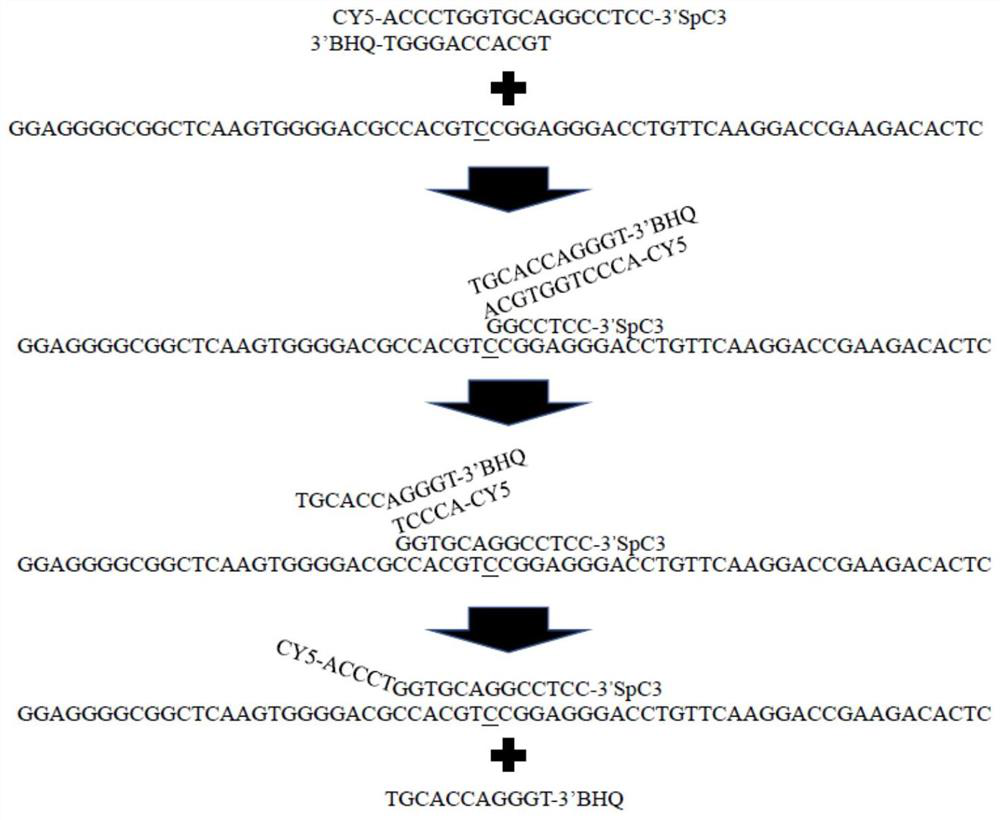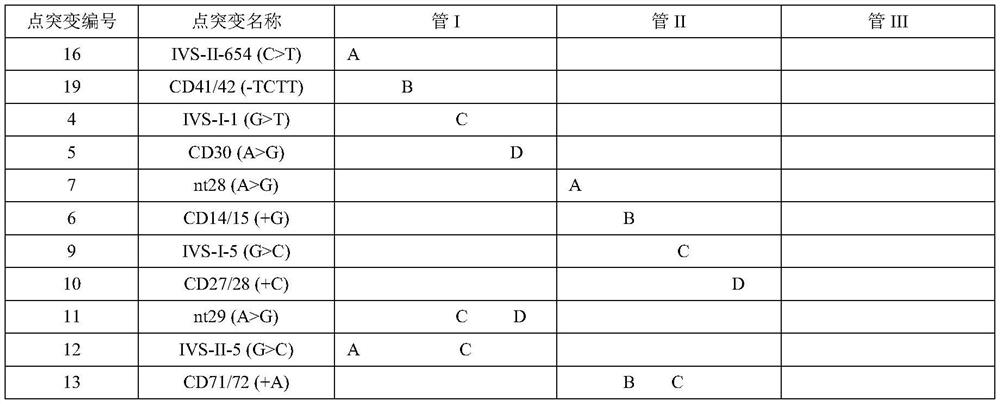Method for detecting alpha-thalassemia and beta-thalassemia point mutation
A technology for thalassemia spots and thalassemia, which is applied in the fields of biochemical equipment and methods, microbial determination/examination, DNA/RNA fragments, etc., can solve the problem that the thalassemia gene detection technology cannot meet the economical, simple and rapid requirements of clinical diagnosis. , complex data analysis and processing, complex detection process and other problems, to achieve the effect of improving detection throughput and mutation sites, simple and convenient operation, and short detection time
- Summary
- Abstract
- Description
- Claims
- Application Information
AI Technical Summary
Problems solved by technology
Method used
Image
Examples
Embodiment 1
[0042] 1. Sequence analysis and primer design of thalassemia gene
[0043] Human globin genes include eight functional genes and three pseudogenes, which form the α-globin gene cluster and β-globin gene cluster according to the globin peptide chains encoded.
[0044] The α-thalassemia gene cluster is located on the short arm of chromosome 16. The sequence of genes is 5′-ζ-ψζ-ψα-α2-α1-θ-3′, with a total length of about 40kb. The functional genes include ζ, α2, and α1 Members are sequentially turned on and off at different stages of human development, and are transcribed and translated into ζ-globin chains and α-globin chains. Normal people have two α-globin genes upstream of each chromosome 16, namely α1 (HBA1 gene) and α2 (HBA2 gene), both of which express the same product, α-globin chain. HBA1 and HBA2 are highly homologous genes with a sequence similarity of about 94%. The sequences of the coding regions of the two are completely consistent, and the differences only exist i...
Embodiment 2
[0058] This embodiment provides a method for detecting 24 kinds of thalassemia point mutations, which include anisotailed double-stranded fluorescent probe, PCR amplification primer, Taq DNA polymerase, PCR buffer, ROX fluorescent dye, positive control, negative control, pure water. The method includes three tube reaction systems and corresponding reagents, that is, PCR system A, PCR system B, and PCR system C. PCR system A and PCR system B are used to detect 18 kinds of point mutations, PCR system C detects 6 kinds of point mutations, and the quality of samples and experimental results are monitored through internal reference signals.
[0059] The specific composition of the method is as follows: Table 2
[0060] component name main ingredient PCR reaction solution A Primers, probes, PCR buffer PCR reaction solution B Primers, probes, PCR buffer PCR reaction solution C Primers, probes, PCR buffer PCR Enzyme Mix Taq DNA polymerase ...
Embodiment 3
[0095] Using the method provided by the invention to detect clinical samples of α-thalassemia and β-thalassemia point mutations
[0096] 1. Sample information
[0097] Peripheral blood samples collected during clinical thalassemia gene detection were used to confirm the type of thalassemia point mutations by Sanger sequencing. The point mutation types were IVS-I-5(G>C), CD14 / 15(+G), Int( ATG>AGG), CD71 / 72 (+A), αWS, αQS, αCS, CD26 (G>A), CD37 (TGG>TAG), nt30 (T>C).
[0098] 2. Sample detection
[0099] Using the description in Example 1, the genomic DNA was extracted from clinical samples and subjected to quality control, and the DNA samples that passed the quality control were tested and judged according to the reaction system and reaction conditions.
[0100] 3. Test results: Table 8
[0101]
[0102]
PUM
 Login to View More
Login to View More Abstract
Description
Claims
Application Information
 Login to View More
Login to View More - R&D Engineer
- R&D Manager
- IP Professional
- Industry Leading Data Capabilities
- Powerful AI technology
- Patent DNA Extraction
Browse by: Latest US Patents, China's latest patents, Technical Efficacy Thesaurus, Application Domain, Technology Topic, Popular Technical Reports.
© 2024 PatSnap. All rights reserved.Legal|Privacy policy|Modern Slavery Act Transparency Statement|Sitemap|About US| Contact US: help@patsnap.com










